DevSecOps—which stands for Development, Security, and IT Operations—builds on the principles of DevOps by incorporating security practices throughout the entire software development lifecycle. DevOps focuses on enabling rapid and agile software development through automation and streamlined collaboration between development and operations teams. It breaks down silos and uses tools to make workflows more efficient and development cycles faster. DevSecOps takes this approach a step further by integrating security as a foundational element of the development process, rather than treating it as an afterthought. In continuous delivery environments, where frequent updates and iterations occur, cybersecurity professionals face challenges in maintaining security standards. Developers often integrate third-party open-source components and APIs, which may have independent security statuses. This can create numerous potential vulnerabilities that are difficult to track and manage. Even minor code changes can inadvertently introduce bugs or security gaps, providing opportunities for bad actors to exploit weaknesses. In this context, security teams are often forced to react to issues created by development processes, despite their best efforts to prevent them. DevSecOps software aims to proactively embed security into the development pipeline, ensuring that secure code is produced from the outset. By adopting this approach, organizations can minimize the risks associated with unforeseen vulnerabilities and ensure that security is not just a checkpoint but a continuous practice. To fully realize the benefits of DevSecOps, teams need the right tools integrated into their existing development workflows. These tools enhance security without compromising efficiency. For example, Software Composition Analysis (SCA) tools automatically track the security status of open-source components used by development teams. With potentially hundreds of components in play, SCA tools continuously scan for security vulnerabilities and version updates. This helps ensure components remain secure and up to date without requiring manual intervention, reducing the security workload for development teams. By integrating these tools into their DevOps pipelines, teams can confidently build software with security built in. Cybersecurity professionals can then focus on strategic security measures, knowing that their workflows are actively secure. This proactive security approach allows DevSecOps teams to operate with greater efficiency and less risk, ultimately fostering a more secure software environment.
Lähetä uusi sovellus

Intruder
intruder.io
Intruder on haavoittuvuuksien hallintaohjelma, joka etsii, tunnistaa ja auttaa korjaamaan verkon ja sovellusten haavoittuvuuksia sekä tarjoaa korjausohjeita ja automaatiotyökaluja.

BugBase
bugbase.ai
BugBase on jatkuva haavoittuvuuksien arviointi- ja hallinta-alusta, joka tarjoaa bug bounty -ohjelmat ja pentestaukset haavoittuvuuksien tunnistamiseen, priorisointiin ja korjaamiseen.

Typo
typoapp.io
Typo on AI-avusteinen ohjelmistotoimituksen hallintatyökalu, joka tarjoaa reaaliaikaisen SDLC‑näkymän, automaattiset koodiarviot ja korjausehdotukset, haavoittuvuudet sekä kehittäjäkokemuksen analyysin.

OX Security
ox.security
OX Security on Active ASPM -alusta, joka yhdistää sovellusturvatyökalut yhteen konsoliin, priorisoi haavoittuvuudet ja automatisoi korjaukset kehitysprosessin aikana.

Qodana Cloud
qodana.cloud
Qodana Cloud analysoi ja valvoo koodin laatua: suorittaa staattisen analyysin yli 60 kielellä, raportoi virheet, tukee tarkastusprofiileja ja auttaa korjaamaan ongelmat.

Aikido Security
aikido.dev
Kehittäjille suunnattu tietoturva-alusta, joka tarjoaa koodin skannauksen ja pilvihaavoittuvuuksien arvioinnin sekä integraatiot yleisiin DevOps-työkaluihin.

Memfault
memfault.com
Memfault kerää kenttälaitteilta vikatiedot, suorituskykymittarit ja lokit sekä hallinnoi OTA‑päivityksiä Linux-, Android- ja MCU‑laitteille.

Trag
usetrag.com
Trag on tekoälypohjainen koodikatselmointityökalu, joka esikatsaa PR-muutokset, löytää virheitä, ehdottaa refaktorointia, tukee luonnolliskielisiä sääntöjä ja tarjoaa PR-analytiikkaa.

Probely
probely.com
Probely on verkkosovellusten ja API:en haavoittuvuusskanneri, joka etsii tietoturva-aukkoja (esim. SQLi, XSS, Log4j), raportoi löydöt ja antaa korjausohjeet.

AppTrana
indusface.com
AppTrana on pilvipohjainen WAAP-alusta, joka löytää julkiset resurssit, skannaa haavoittuvuuksia ja suojaa verkkosivustoja ja API‑rajapintoja hyökkäyksiltä.
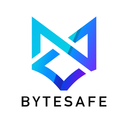
Bytesafe
bytesafe.dev
Bytesafe on alusta ohjelmistoriippuvuuksien suojaamiseen ja hallintaan: riippuvuuksien palomuuri, pakettien hallinta, koostuman analyysi ja lisenssien noudattaminen.

Edge Delta
edgedelta.com
Edge Delta tunnistaa poikkeamat reaaliaikaisesti ja nopeuttaa tuotantovirheiden selvittämistä keräämällä, analysoimalla ja visualisoimalla loki- ja telemetriadataa sekä tukemalla automaatiota.

Assembla
assembla.com
Tarjoaa turvallisen pilvipalvelun Subversion-, Perforce- ja Git-repositorien isännöintiin sekä integroidun projektinhallinnan ohjelmistokehitysryhmille.

Mandiant
mandiant.com
Mandiant tarjoaa uhkatieto- ja tapahtumavastauspalvelun, joka tunnistaa, analysoi ja auttaa reagoimaan tietoverkkohyökkäyksiin sekä integroituu Google Cloud -ympäristöihin.

Cobalt
cobalt.io
Cobalt tarjoaa hyökkäävään tietoturvatestaukseen keskittyvän alustan ja asiantuntijapalvelut: penetraatiotestit, jatkuva haavoittuvuusseuranta (ASM), DAST, löydöt ja integraatiot muihin järjestelmiin.

Middleware
middleware.io
Middleware on reaaliaikainen pilvihavaittavuusalusta, joka yhdistää mittarit, lokit ja jäljet yhteen aikajanalle virheiden selvittämistä, ilmoituksia ja juurisyiden analysointia varten.

Xygeni
xygeni.io
Xygeni valvoo ja suojaa ohjelmistokehitystä ja toimitusketjua: havaitsee haittakoodin ja salaisuudet, tarkastaa avoimen lähdekoodin komponentit, IaC:n, CI/CD:n ja kontit.

Webscale
webscale.com
Webscale on pilvipalvelu verkkokaupoille: se automatisoi monipilvi-infrastruktuurin käyttöönoton, hallinnan ja skaalaamisen, suojaa sekä optimoi suorituskyvyn.

Inspectiv
inspectiv.com
Inspectiv tarjoaa pentestauksen ja hallinnoidun bug bounty -palvelun, jonka avulla tietoturvatiimit löytävät ja hallitsevat kriittisiä haavoittuvuuksia ennen niiden hyväksikäyttöä.
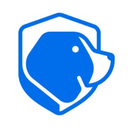
Beagle Security
beaglesecurity.com
Beagle Security skannaa verkkosovellukset, API:t ja GraphQL-päätepisteet haavoittuvuuksien löytämiseksi, antaa korjausohjeet ja integroituu CI/CD-työkaluihin.

Zerocopter
zerocopter.com
Zerocopter yhdistää organisaatiot eettisten hakkerien yhteisöön, hallinnoi bug-bounty-ohjelmia ja tukee haavoittuvuuksien ilmoittamista, seurantaa ja korjaamista.

Trickest
trickest.com
Trickest automatisoi loukkaavia kyberturvallisuustestit ja löytää organisaation digitaaliset omaisuudet ja haavoittuvuudet, mahdollistaen räätälöinnin ja skaalauksen.

Bright Security
brightsec.com
DAST-työkalu kehittäjille ja AppSec-ammattilaisille: automatisoitu turvallisuustestaus web‑sovelluksille, API:ille ja GenAI/LLM‑sovelluksille, integroitu SDLC‑työkaluihin ja vähentää väärähälytyksiä.

Mezmo
mezmo.com
Mezmo on havaittavuusalusta, joka kerää, käsittelee ja reitittää lokitietoja reaaliajassa, mahdollistaen analyysin, hälytykset ja virheiden sekä suorituskyvyn seurannan.

Fossa
fossa.com
Fossa skannaa ja hallitsee avoimen lähdekoodin komponenttien lisenssejä, haavoittuvuuksia ja käyttöpolitiikkoja, integroituna CI/CD-työnkulkuun.

Akto
akto.io
Akto tarjoaa API-turvallisuuden hallinnan: löytää ja skannaa rajapintoja, automatisoi turvallisuustestit CI/CD-putkissa, hallitsee suojausasentoa, testaa autentikointia ja arkaluonteisten tietojen paljastuksia.

CodeScene
codescene.com
CodeScene analysoi ja visualisoi koodia ja tiimidataa, tunnistaa teknistä velkaa, antaa priorisointi- ja refaktorointisuosituksia sekä integroituu Git-työnkulkuihin.

Aqua Security
aquasec.com
Aqua Security suojaa pilviympäristöissä ja konteissa toimivia sovelluksia koko elinkaaren ajan: haavoittuvuusskannaus, ajonaikainen suojaus, uhkatiedot ja vaatimustenmukaisuuden valvonta.

Veriato
veriato.com
Veriato on käyttäjäkäytöksen seuranta- ja analytiikkaohjelma, joka valvoo työasematoimintoja, tunnistaa sisäisiä riskejä sekä tuottaa hälytyksiä ja raportteja tietoturvan ja tuottavuuden seurantaan.

Oversecured
oversecured.com
Oversecured on yrityksille tarkoitettu haavoittuvuusskanneri Android- ja iOS-sovelluksille. Auttaa sovellusomistajia ja kehittäjiä löytämään ja korjaamaan haavoittuvuuksia osana kehitysprosessia.

Havoc Shield
havocshield.com
Tarjoaa yhdellä alustalla kyberturvararatkaisun rahoitusalan toimijoille ja auttaa täyttämään GLBA-, FTC-, IRS- ja NYDFS-vaatimukset: vaatimustenmukainen suunnitelma, asiantuntijaohjeet ja työkalut.

Reflectiz
reflectiz.com
Reflectiz havaitsee ja lieventää kolmansien osapuolten skripteistä ja toimitusketjun uhista aiheutuvia turvallisuus- ja yksityisyysriskejä verkkosivustoilla ilman koodimuutoksia.

Cribl
cribl.io
Cribl Stream on havaittavuus- ja dataputkialusta, joka kerää, muokkaa, reitittää ja toistaa reaaliaikaisesti lokit, mittarit ja jäljet sekä vähentää siirrettävää datamäärää.

SOOS
soos.io
SOOS on sovellusturvallisuuden hallinta-alusta, joka skannaa verkkosovelluksia ja API‑rajapintoja haavoittuvuuksien löytämiseksi ja seurannaksi.

CodeThreat
codethreat.com
CodeThreat on SAST-alusta, joka staattisesti analysoi lähdekoodin ilman esikäännöstä, löytää, priorisoi ja auttaa korjaamaan tietoturva-aukkoja CI/CD-putkissa.

Hackrate
hckrt.com
Hackrate on joukkolähteinen turvallisuustestausalusta, joka yhdistää yritykset eettisiin hakkereihin löytämään ja korjaamaan tietoturva-aukkoja.

AlgoSec
algosec.com
AlgoSec automatisoi ja hallitsee sovellusyhteyksiä, palomuurisääntöjä ja vaatimustenmukaisuutta hybridi‑verkossa; löytää sovellukset, arvioi riskit ja automatisoi muutokset.

prooV
proov.io
prooV Red Cloud tarjoaa räätälöidyn pilviympäristön, jossa voi simuloida kyberhyökkäyksiä ja arvioida ohjelmistojen reagointia ennen käyttöönottoa.

Secure Blink
secureblink.com
Secure Blink on kehittäjille suunnattu AppSec-työkalu, joka automaattisesti tunnistaa, priorisoi ja auttaa korjaamaan tunnettuja ja uusia haavoittuvuuksia sovelluksissa ja API:ssa.

Contrast Security
contrastsecurity.com
Contrast Security upottaa reaaliaikaisen haavoittuvuuksien havainnon ja hyökkäyssuojauksen sovelluksiin, tarjoten jatkuvaa näkyvyyttä ja automaattista suojaa kehityksestä tuotantoon.

Orca Security
orca.security
Orca Security on pilviturvallisuusalusta, joka löytää, priorisoi ja korjaa riskejä ja vaatimustenmukaisuushäiriöitä monipilvi- ja Kubernetes-ympäristöissä ilman agentteja.

Digital.ai
digital.ai
Digital.ai on yritystason ohjelmistotoimitusalusta, joka yhdistää tekoälyavusteisen analyysin, automaation ja jatkuvat testaukset ohjelmistokehityksen laadun, toimituksen ja tietoturvan parantamiseksi.
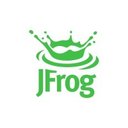
JFrog
jfrog.com
JFrog on ohjelmistojen toimitusketjun alusta, joka tarjoaa keskitetyn pakettihallinnan, CI/CD-automaatioita, tietoturvaskannauksen ja ML-mallien elinkaaren hallinnan.

Logz.io
logz.io
Logz.io tarjoaa pilvipohjaisen lokien, mittareiden ja jäljitysten seuranta- ja tietoturvaratkaisun, joka kerää, visualisoi ja ilmoittaa poikkeamista yhdestä käyttöliittymästä.

logit.io
logit.io
Logit.io on lokinhallinta-alusta, joka kerää, tallentaa, analysoi ja visualisoi lokitietoja eri lähteistä sekä tarjoaa pilvi‑näkyvyyden ja infrastruktuurivalvonnan. ISO27001-sertifioitu, GDPR-yhteensopiva.
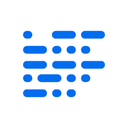
Embold
embold.io
Embold analysoi koodia, löytää kriittiset virheet ja teknisen velan, priorisoi korjaukset ja ehdottaa refaktorointeja; toimii osana DevOps-ympäristöä paikallisesti tai pilvessä.

Code Climate Quality
codeclimate.com
Analysoi ja raportoi koodin laatua: automaattiset tarkistukset, haavoittuvuudet, testikattavuus ja ylläpidettävyys, jotta tiimit löytävät ja korjaavat ongelmat sekä seuraavat muutoksia.

Sematext
sematext.com
Sematext tarjoaa yhtenäisen alustan infrastruktuurin, sovellusten ja lokien seurannalle sekä reaaliaikaiseen käyttäjä- ja synteettiseen monitorointiin koko teknologiapinolle.

OverOps
overops.com
OverOps paikantaa ajossa virheiden perimmäisen syyn Java- ja .NET-backendeissa pre-prodissa ja tuotannossa, tarjoaa kooditason kontekstin ja vähentää manuaalista lokien etsintää.
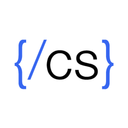
CodeScan
codescan.io
CodeScan Shield suorittaa staattisen koodianalyysin ja organisaatiopolitiikkojen valvonnan Salesforce-ympäristössä, tarjoaa raportit, hälytykset ja noudattamisen seurannan.

The Code Registry
thecoderegistry.com
The Code Registry varmistaa ja analysoi yritysten koodivarastot: turvallinen automaattinen varmuuskopio, koodin tietoturva- ja riippuvuustarkastukset, koodin kompleksisuus- ja arvokehitysraportit.

Cycode
cycode.com
Cycode on työkalu ohjelmiston toimitusketjun tietoturvaan. Se tarkkailee koko SDLC:n, skannaa koodin ja infrastruktuurin, tunnistaa haavoittuvuudet, koodimuutokset ja hallinnoi SBOMeja.

OpenResty
openresty.com
OpenResty yhdistää Nginxin ja LuaJITin, mahdollistaen dynaamisten verkkopalveluiden, API:en ja verkkovälityspalvelimien rakentamisen sekä HTTP‑pyyntöjen käsittelyn.

Edgio
edg.io
Edgio tarjoaa globaalin reunaverkon ja integroidut sovellus- ja mediantoimituspalvelut, jotka nopeuttavat, suojaavat ja hallitsevat verkkosivujen sekä suoratoistosisällön toimitusta.

Jit
jit.io
Jit on sovellusten ja pilviympäristöjen tietoturva-alusta, joka skannaa koodia ja ajonaikaisia ympäristöjä (SAST, DAST, CSPM), antaa korjausohjeet ja integroituu kehitystyökaluihin.

Anodot
anodot.com
Anodot on AI-pohjainen analytiikkatyökalu, joka tunnistaa reaaliaikaiset poikkeamat, ennustaa trendejä, ehdottaa toimenpiteitä ja valvoo pilvikustannuksia.

Indusface WAS
indusface.com
Indusface WAS on pilvipohjainen web-sovellusten ja API:en skannauspalvelu, joka päivittäin tarkistaa haavoittuvuudet, OWASP Top10-virheet ja haittaohjelmat.

TIBCO
tibco.com
TIBCO tarjoaa pilvipohjaisen alustan sovellus- ja tietointegraatioon, reaaliaikaiseen analytiikkaan ja tiedonhallintaan eri järjestelmien yhdistämiseksi.

ResilientX
resilientx.com
ResilientX on kyberturvallisuusalusta, joka tunnistaa, mittaa ja hallitsee organisaatioiden ensimmäisen ja kolmansien osapuolien kyberriskejä ja altistumista.
Ratkaisut
© 2025 WebCatalog, Inc.